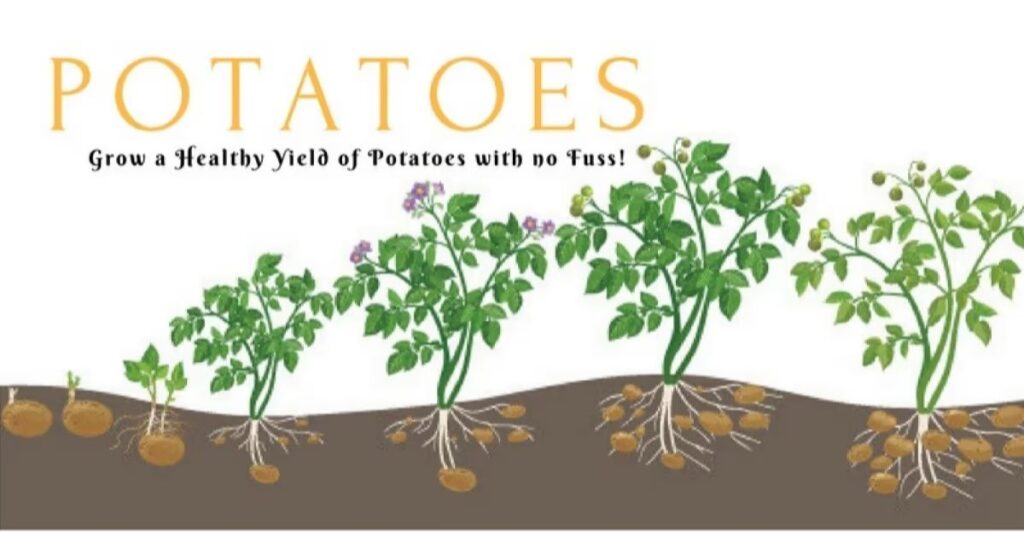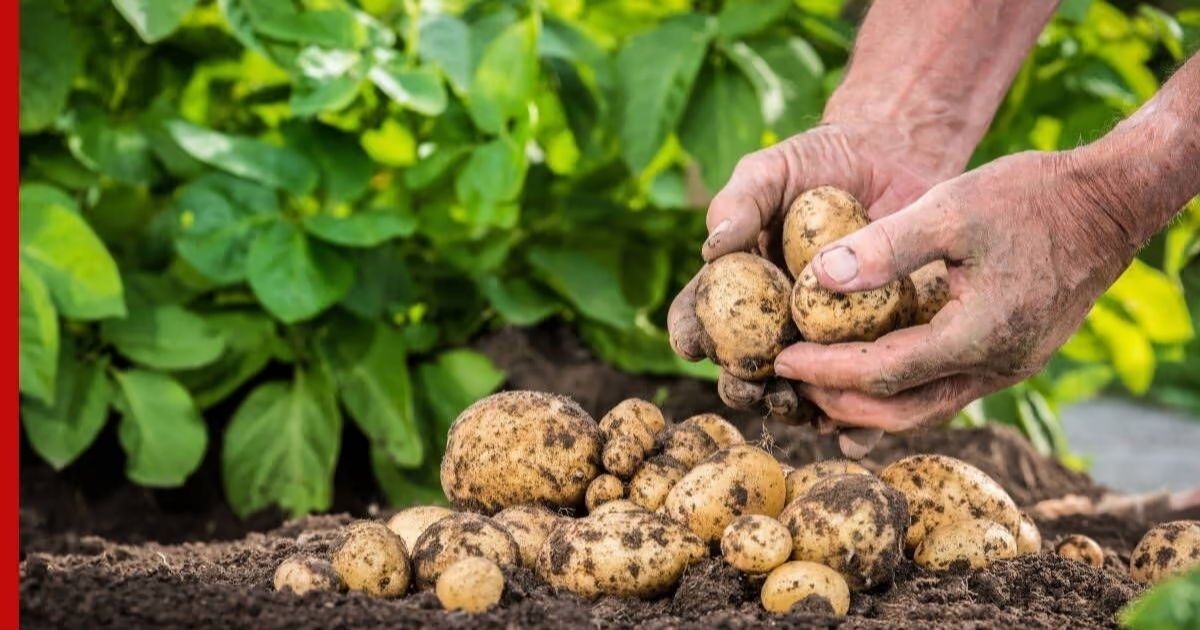When we think of potatoes, we often picture the humble tubers nestled beneath the soil. However, there’s a fascinating world above ground that often goes unnoticed – the secret life of potato flowers. These delicate blossoms play a crucial role in the life cycle of the potato plant (Solanum tuberosum) and offer surprising beauty to boot.
In this comprehensive guide, we’ll explore the hidden wonders of potato flowers, from their stunning varieties to their importance in potato cultivation and beyond.
The Aesthetics and Varieties of Potato Flowers
Diverse Palette of Potato Blossoms
Potato flowers, often overlooked in favor of their underground counterparts, boast a surprising range of colors and forms. These blossoms typically appear in shades of white, lavender, pink, and even striking blue.
Each color variation isn’t just a visual treat; it’s also an indicator of the specific potato variety. For gardeners and enthusiasts alike, these flowers can become a captivating component of garden design, contributing both color and texture to the landscape.
Potato Roses – A Unique Floral Display
The term “potato roses” isn’t referring to a separate species, but rather to the charming way potato flowers cluster together, resembling miniature roses. This poetic description captures the essence of how these blossoms arrange themselves, creating a rose-like appearance that can become a focal point in gardens.
The resemblance is particularly striking during the peak blooming months from late spring to early summer, adding an unexpected touch of elegance to the potato patch.
Seasonal Changes and Flowering Patterns
Understanding the flowering patterns of potato plants is crucial for both gardeners and potato enthusiasts. Generally, potato plants start flowering in late spring, with peak blooming occurring in July. However, the duration and intensity of flowering can vary based on several factors, including climate, soil conditions,
and the specific potato variety. Savvy gardeners often use the flowering stage as an indicator of the development of the tubers underground, making it an important visual cue in potato cultivation.
Varietal Differences and Their Impact on Flowers
Different potato varieties produce distinct flower types, adding to the diversity of these often-overlooked blossoms. Some varieties might have larger, more vivid blossoms, while others might be more subtle in their floral display.
These varietal differences are not just aesthetically pleasing; they’re essential for those interested in garden design or in cultivating specific potato types. The flowers can serve as a visual guide to the variety growing beneath the soil.
The Role of Flowers in Potato Plant Health
Beyond their beauty, potato flowers play a crucial role in the plant’s lifecycle and overall health. Healthy flowering is often a sign of a well-developed potato plant, which bodes well for the tuber’s growth beneath the soil.
Also read this post:Tulips are one of the most beloved spring flowers
The presence and vigor of flowers can indicate that the plant is receiving adequate nutrients, sunlight, and water, making them a valuable diagnostic tool for gardeners.
Integrating Potato Flowers into Garden Design
Potato flowers can be a delightful and unexpected addition to any garden design. Their varied colors and patterns can complement other flowers and plants, creating a diverse and vibrant garden space.
Gardeners often pair them with other flowering plants that bloom in the same season, such as roses and lavender, to create a harmonious and visually appealing garden design. This integration not only adds beauty but also promotes biodiversity in the garden ecosystem.
The Lifecycle of Potato Plants

From Tuber to Flower – A Journey of Growth
The journey of a potato plant begins with a small section of a potato tuber, often referred to as a ‘seed potato’. This tuber piece contains ‘eyes’ or buds from which the new plant will sprout.
As temperatures warm in the spring, these sprouts emerge from the soil, developing into lush, green plants. Understanding this journey from tuber to flower is crucial for anyone looking to cultivate potatoes successfully.
Stages of Growth
The growth of a potato plant can be categorized into several distinct stages:
- Sprouting: Emerging from the seed potato, sprouts grow towards the surface.
- Vegetative Growth: Characterized by rapid growth of leaves and stems.
- Tuber Initiation: Roots begin to thicken and form tubers.
- Tuber Bulking: Tubers grow in size, accumulating starch.
- Maturation: The plant begins to yellow and die back, indicating tuber maturity.
Each of these stages plays a crucial role in the development of both the plant and its precious tubers.
Flowering as a Developmental Milestone
Flowering typically occurs in the early to mid-summer, around June or July, depending on the climate. The appearance of flowers is a crucial developmental milestone, indicating that the plant is healthy and that tuber development is well underway.
However, it’s important to note that not all potato varieties flower profusely, and some may not flower at all. This variation is normal and not necessarily a sign of poor health.
Sweet Potato Variations
While often confused with regular potatoes, sweet potatoes (Ipomoea batatas) are a distinct species with their own unique lifecycle and flowering habits. Sweet potato plants tend to have more vine-like growth and produce attractive flowers that resemble those of their relative, the morning glory.
These plants usually flower later in the season and require a longer growing period than regular potatoes, adding diversity to the world of tuberous plants.
Environmental Factors Influencing Flowering
Several environmental factors can influence whether and when a potato plant flowers. These include the length of the growing season, temperatures, soil conditions, and the amount of sunlight the plant receives.
In some cases, particularly in hot climates, potato plants may skip the flowering stage and proceed directly to Tuber Bulking. Understanding these factors can help gardeners optimize conditions for their potato plants.
The Significance of Flowering in Tubers Production
While flowering is a good sign of a healthy potato plant, it’s not a prerequisite for tuber formation. Some potato varieties produce an abundant harvest even without flowering.
The primary purpose of the flower is reproduction, and in cultivated varieties, this is often a secondary concern compared to tuber production. However, the presence of flowers can still be a useful indicator of the plant’s overall health and development.
Practical Aspects of Growing Potatoes
Choosing the Right Variety
The first step in growing potatoes is selecting the right variety. Gardeners should consider factors like climate adaptability, resistance to diseases, and the desired characteristics of the tubers, such as size, color, and taste.
Varieties differ in terms of maturity time (early, midseason, or late), and this choice can affect the timing of planting and harvesting. Popular varieties like Yukon Gold offer a balance of flavor and adaptability, making them a favorite among home gardeners.
Preparing the Soil and Planting
Potatoes thrive in well-drained, fertile soil with a slightly acidic pH. Before planting, the soil should be loosened and enriched with organic matter, like compost.
Seed potatoes are typically planted about 2-3 inches deep and 12 inches apart, in rows spaced about 2-3 feet apart. It’s crucial to plant seed potatoes after the danger of frost has passed to ensure optimal growth conditions.
Watering and Fertilizing
Consistent watering is crucial for potato plants, especially during the tuber formation and bulking stages. The soil should be kept moist but not waterlogged. Over-watering can lead to rot, while under-watering can result in small or deformed tubers.
Balanced fertilization, especially with potassium and phosphorus, is essential for healthy growth and development. Many gardeners opt for organic fertilizers to promote soil health and sustainable growing practices.
Hilling and Mulching
As the plants grow, it’s important to ‘hill’ them by piling soil around the stems. This process prevents the tubers from being exposed to sunlight, which can turn them green and toxic.
Mulching with straw or leaves can help retain moisture, suppress weeds, and keep the soil cool. These practices not only protect the developing tubers but also contribute to overall plant health and productivity.
Pest and Disease Management
Common pests like Colorado potato beetles and aphids can be managed through regular inspection and organic control methods. Diseases such as blight and scab can be minimized by rotating crops, avoiding overhead watering, and choosing resistant varieties.
Integrated pest management techniques can help maintain a healthy potato crop without relying heavily on chemical interventions.
Harvesting and Storage
Potatoes can be harvested once the tops of the plants begin to die back. For new potatoes, they can be harvested earlier when the flowers start to bloom.
After harvesting, potatoes should be cured in a dark,
well-ventilated area for about two weeks to toughen their skins. Proper storage in a cool, dark place sprouts and extends the shelf life of the harvested tubers.
Growing Potatoes in Containers
For those with limited space, potatoes can also be grown in large containers, grow bags, or even sacks. This method requires careful attention to watering, feeding, and avoiding overcrowding of tubers.
Container growing can be an excellent way to cultivate potatoes in urban settings or small gardens, offering flexibility and control over growing conditions.
The Unique Aspects of Potato Blossoms

Understanding Potato Flower Structure
Potato blossoms are beautiful and fascinating in their structure. Each blossom typically consists of five petals, often fused at the base, and can vary from white and pink to shades of violet and blue.
The center of the flower contains reproductive parts: stamens and a pistil, which are crucial for the potential formation of fruit. This structure is typical of the Solanaceae family, to which potatoes belong.
The Role of Flowers in Potato Reproduction
While modern potato cultivation primarily focuses on tuber production, the flowers play a crucial role in the plant’s natural reproductive cycle. The blossoms can potentially lead to the formation of small green fruits, often referred to as potato berries or potato fruit.
These fruits contain true seeds, which can be used for breeding new potato varieties but are generally not used in conventional potato farming.
Potato Berries: A Lesser-Known Fruit
Potato berries, which develop from the flowers, are small, green, and resemble tiny tomatoes. They contain seeds that carry the genetic information of the plant. However, these fruits are rarely seen in commercial potato cultivation as most farmers propagate potatoes vegetatively using tubers, which ensures consistency in crop quality.
The existence of these berries is a reminder of the potato’s relationship to other members of the nightshade family, like tomatoes.
Toxicity of Potato Blossoms and Berries
An important aspect of potato flowers and fruits is their potential toxicity. Like other parts of the plant above ground, the flowers and berries contain solanine, a toxic compound.
This makes them unsafe for human consumption, contrary to the edible tubers that develop underground. Gardeners and foragers must be aware of this toxicity to ensure the safe handling and use of potato plants.
Flower Variability Among Potato Varieties
Different potato varieties exhibit varying degrees of flowering. Some may produce abundant flowers, while others may have few or none.
This variability does not generally affect the quality or quantity of the tubers produced. Flowering is more common in certain heritage or heirloom varieties, which can be a point of interest for gardeners and potato enthusiasts looking to explore the diversity of potato plants.
Potential Uses of Potato Flowers in Breeding
In breeding programs, the flowers are essential for developing new potato varieties. Cross-pollination can be conducted to combine desirable traits from different varieties, leading to new cultivars with improved characteristics, such as disease resistance or enhanced nutritional value.
This process of selective breeding has been crucial in developing the wide range of potato varieties available today.
Ornamental Use of Potato Plants
In addition to their agricultural value, potato plants, with their attractive flowers, can also serve as an ornamental addition to gardens.
Their blooming period adds a splash of color and can complement other garden plants, making them a unique choice for both vegetable and flower gardens. This dual-purpose nature of potato plants makes them versatile additions to diverse garden designs.
Potato Flowers in Culinary and Horticulture

Potato Flowers: A Culinary Perspective
While the potato tuber is a staple in cuisines worldwide, the flowers of the potato plant are less commonly used in cooking. It’s important to note that, unlike the tubers, potato flowers and the green fruit they may produce are generally considered toxic due to the presence of solanine.
Therefore, they are not recommended for culinary use. However, in certain cultures, there may be traditional uses of the non-toxic parts of the plant above ground, though these practices are rare and require specific knowledge to ensure safety.
Potato Flower Recipe Experimentation
Despite the general inedibility of potato flowers, there can be interest in culinary experimentation with non-toxic parts of the plant. Such experimentation should always prioritize safety and be guided by a deep understanding of which parts of the plant are safe to consume.
Most often, culinary uses of potatoes focus on the tubers, which offer a wealth of versatility in cooking. The flowers, while beautiful, are best appreciated visually rather than gastronomically.
Horticultural Significance of Potato Flowers
In horticulture, potato flowers are valued for their aesthetic appeal and as indicators of plant health. Gardeners often look to the blossoming of potato plants as a sign that the tubers are developing well.
The variety of colors and shapes of potato flowers can also add visual interest to a vegetable garden, making them a valuable component of diverse and attractive garden designs.
Potato Flower Seeds for Planting
While commercial potato cultivation typically involves planting tuber pieces, potato flowers can produce true seeds. These seeds can be used in breeding programs or by home gardeners interested in growing potatoes from seed, which can be an exciting way to experiment with creating new varieties.
Growing potatoes from seeds can also introduce more genetic diversity into the garden, potentially leading to unique and interesting new potato plants.
Potato Blossoms in Garden Design
The aesthetic value of potato plants, particularly when in bloom, should not be underestimated in garden design. Their flowers can contribute color and form to a garden, particularly when integrated with other flowering plants.
For those interested in edible landscaping, incorporating flowering potato plants can add both beauty and utility to the garden space, creating a harmonious blend of ornamental and productive elements.
In conclusion, the secret life of potato flowers reveals a world of beauty, complexity, and utility that often goes unnoticed. From their role in potato plant health and reproduction to their potential in garden design and breeding programs, these humble blossoms offer much more than meets the eye.
By understanding and appreciating the diverse aspects of potato flowers, gardeners and enthusiasts can gain a deeper appreciation for this staple crop and its place in our gardens and on our plates. Whether you’re a seasoned potato grower or simply curious about the hidden wonders of common plants, the world of potato flowers offers endless fascination and discovery.
FAQs
What does the potato flower symbolize?
The potato flower symbolizes resilience and hidden potential, much like the tubers that grow unseen beneath the soil. In some cultures, it also represents sustenance and the ability to thrive in challenging conditions.
Do potato flowers smell?
Potato flowers typically have a very mild, subtle fragrance that is not particularly noticeable. While not completely scentless, their aroma is not as prominent as many other flowering plants.
What are the characteristics of potato flowers?
Potato flowers are typically small, star-shaped blooms with five petals that can range in color from white to purple, pink, or blue. They grow in clusters at the end of stems and have yellow stamens in the center, characteristic of the Solanaceae family.
How rare are sweet potato flowers?
Sweet potato flowers are relatively rare in typical garden settings, as the plants often don’t bloom in temperate climates with shorter growing seasons. However, in tropical or subtropical regions with long, warm growing seasons, sweet potato plants may produce beautiful, trumpet-shaped flowers similar to morning glories.











